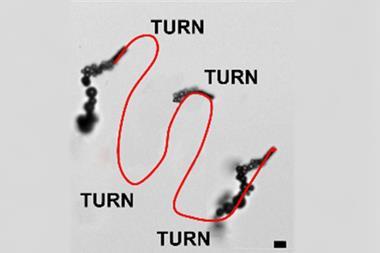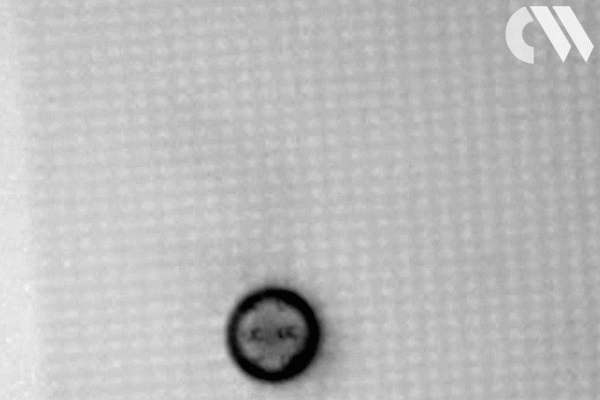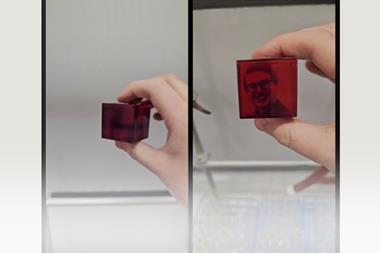Scientists in China and Hong Kong have created a tiny tugboat that can push an object 6500 times heavier than itself. Key to the microrobot’s power, which has a speed–mass ratio larger than that of a supersonic aircraft, is a serrated tail designed to maximise the interface between the robot and its environment.
The difficulty with microrobots in bioapplications is that the robot must be able to swim through viscous surroundings, ideally without needing an external trigger to make it move. One solution is to drive the robot’s motion with a chemical reaction.
The 3D-printed microrobot, made by Yajing Shen from the City University of Hong Kong and colleagues, is coated with nanolayers of nickel and platinum that catalyse the decomposition of hydrogen peroxide to produce water and oxygen bubbles. These bubbles drive the microrobot forward. By having multiple channels in the serrated tail the microrobot generates enough bubbles for it to reach speeds of 1026µm/s and push enormous plastic loads that are thousands of times heavier than it is.
References
D Li et al, Nanoscale, 2018, DOI: 10.1039/c8nr04907f



















No comments yet